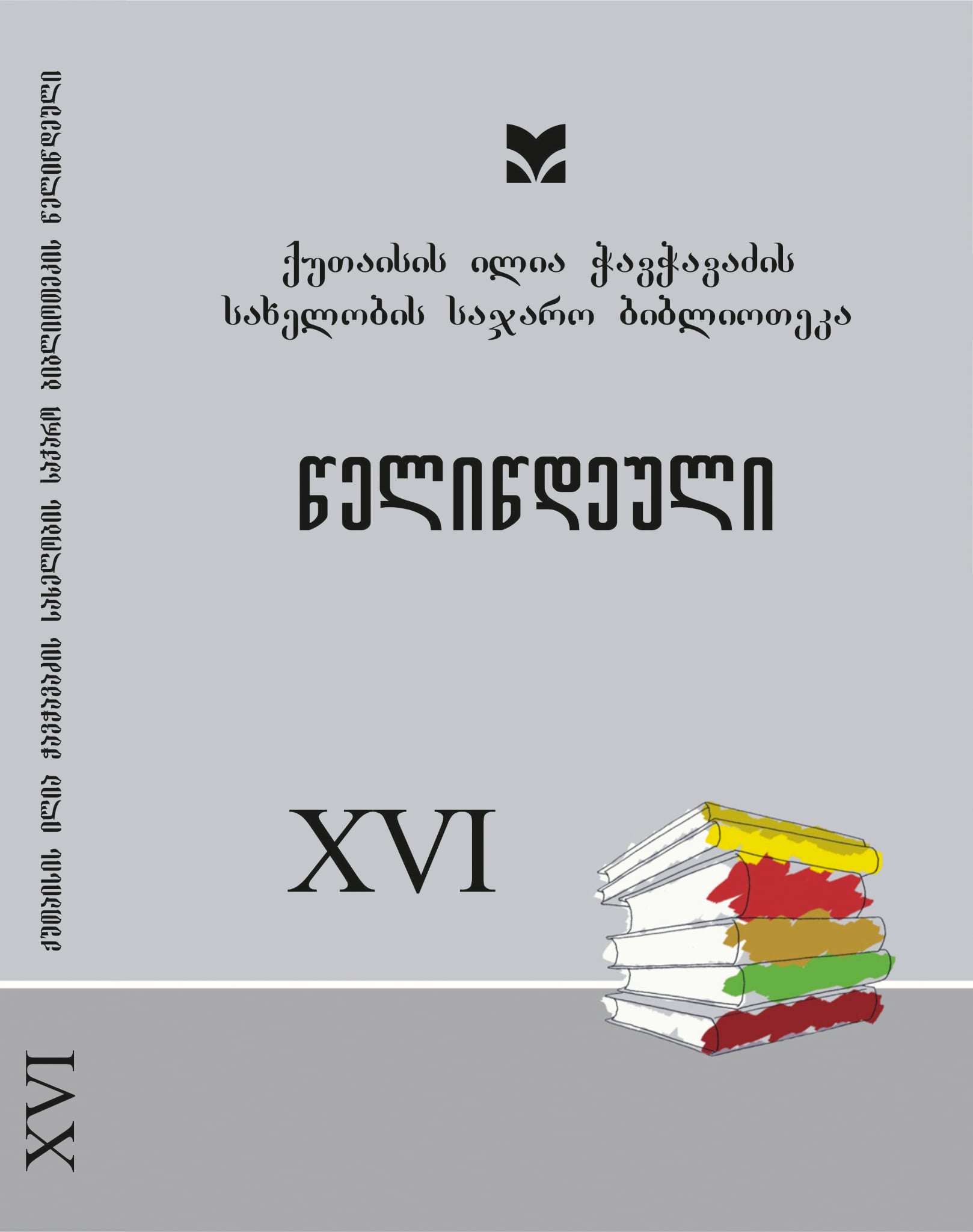Structural-semantic variants of some word-forms in Gurian
DOI:
https://doi.org/10.61491/yk.16.2024.9395Keywords:
Gurian dialect, dialectal vocabulary, lexicographyAbstract
The study of dialect, as one of the subsystems of the language system, is of great importance for the development of language.
Among the dialects of the Georgian language, Gurian holds a special place. Information about it dates back to the 18th century. It has been studied quite well. Many works have been devoted to Gurian dialect, the authors of which discussed it as individual phenomena characteristic of Gurian itself, as well as its relationship to other dialects of the Georgian language and the general Georgian level.
The objective of our research is to identify dialectal varieties, in particular, structural-semantic variants of lexical units in Gurian and analyze them on the basis of comparison and reconciliation with the data of the Georgian literary language and other dialects. Despite the fact that this issue has been studied before, this topic does not lose its relevance to this day. In addition, research at the level of lexicology is necessary not only from the lexicographic point of view, but also from the point of view of the history of the language.
Taking into account the data of the existing scientific literature and lexical materials about the Gurian dialect, the paper discusses the structural-semantic variants of some word forms in relation to other dialects of the Georgian language. We will distinguish between both the noun and the verb forms and other lexical units in their semantic field, such as, for example, nuskha (list) > aghnuskhva (to list), monuskhva (listing)… Manana (A silkworm that is stunted and late to emerge from the cocoon) > gamomananeba (Separately separating manana worms, feeding them, and making a separate enclosure for them), khlarti (knot) > dakhlartva (knotted)... naptskveni (peelings) > gaptskvna (to peel)... nardi (gossip or sparrow-hawk), tiali (of light colour), brazi (A dog illness that causes the dog to cough), etli (A harmless, obedient person), lengera (thick strong stick), uniagabo (unpleasant, unsuitable)butia (If a chicken has thick feathers on its ears and looks proud), gazutkhuli (lying flat), khimenji/khenji (Precipitation, sediment), dazaveba (too tired), sheneleba (to reprimand, to punish), gamartva (to train), damotsmeba (passing on), utiktikebs (babbling)... as well as agricultural terms: nadzira/e-i (Garbage accumulated on a silkworm cocoon), neki (The part of an old cart (a wooden cart) that is attached to a sword), sasule (Air outlet hole from the pitcher), ghili (tag), khmali (The part of a plank cart that is lowered into
a broken plank and on which ribs are placed). Most of these word forms are found in Gurian with different meanings (sometimes structurally as well).
The discussion of the structural-semantic variants of the word form characteristic of the Gurian dialect through comparison and reconciliation with the data of the literary language and other dialects of the Georgian language provides an interesting picture, results not only from the etymological-lexicographic point of view, but also, in general, from the point of view of the history of language development.




